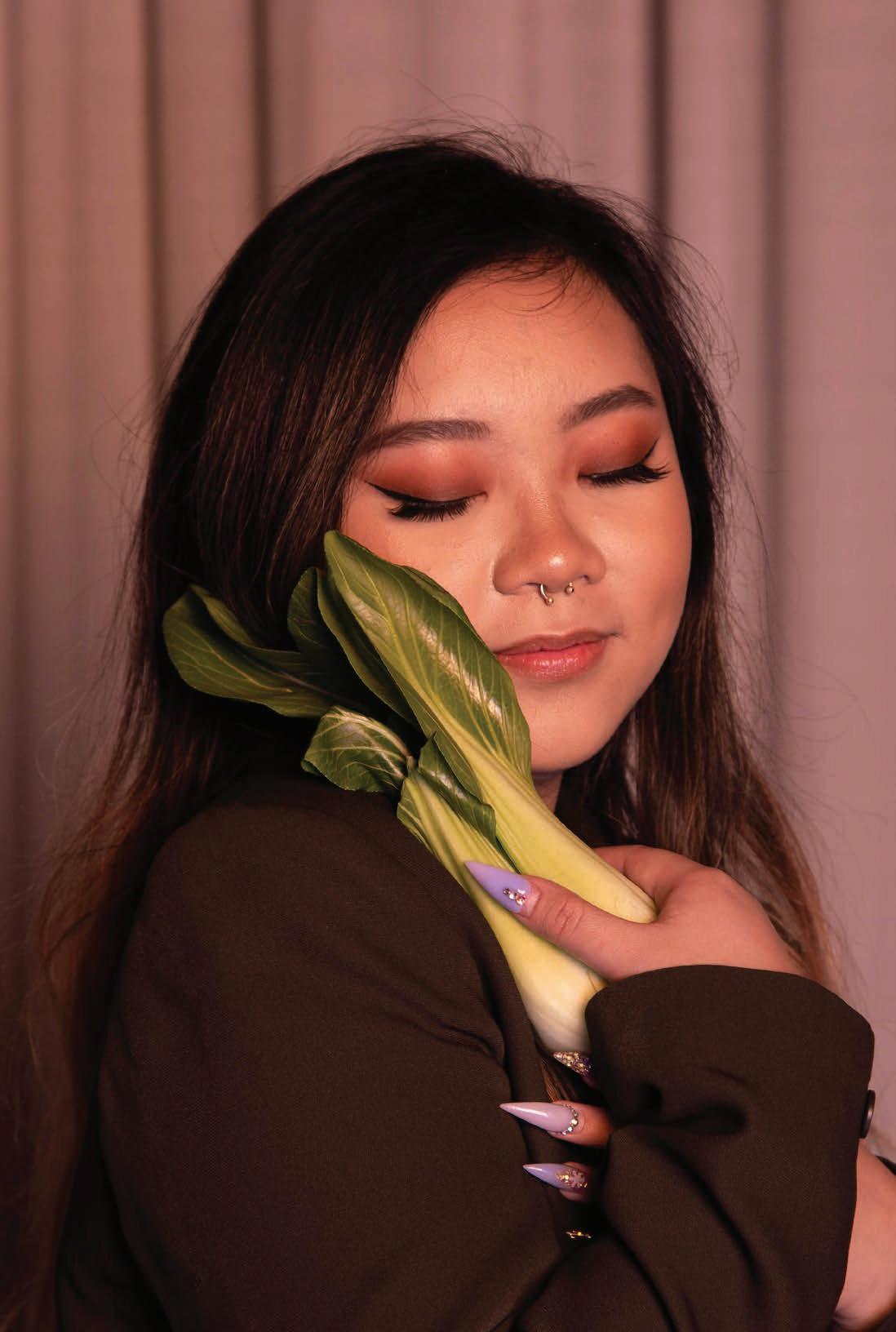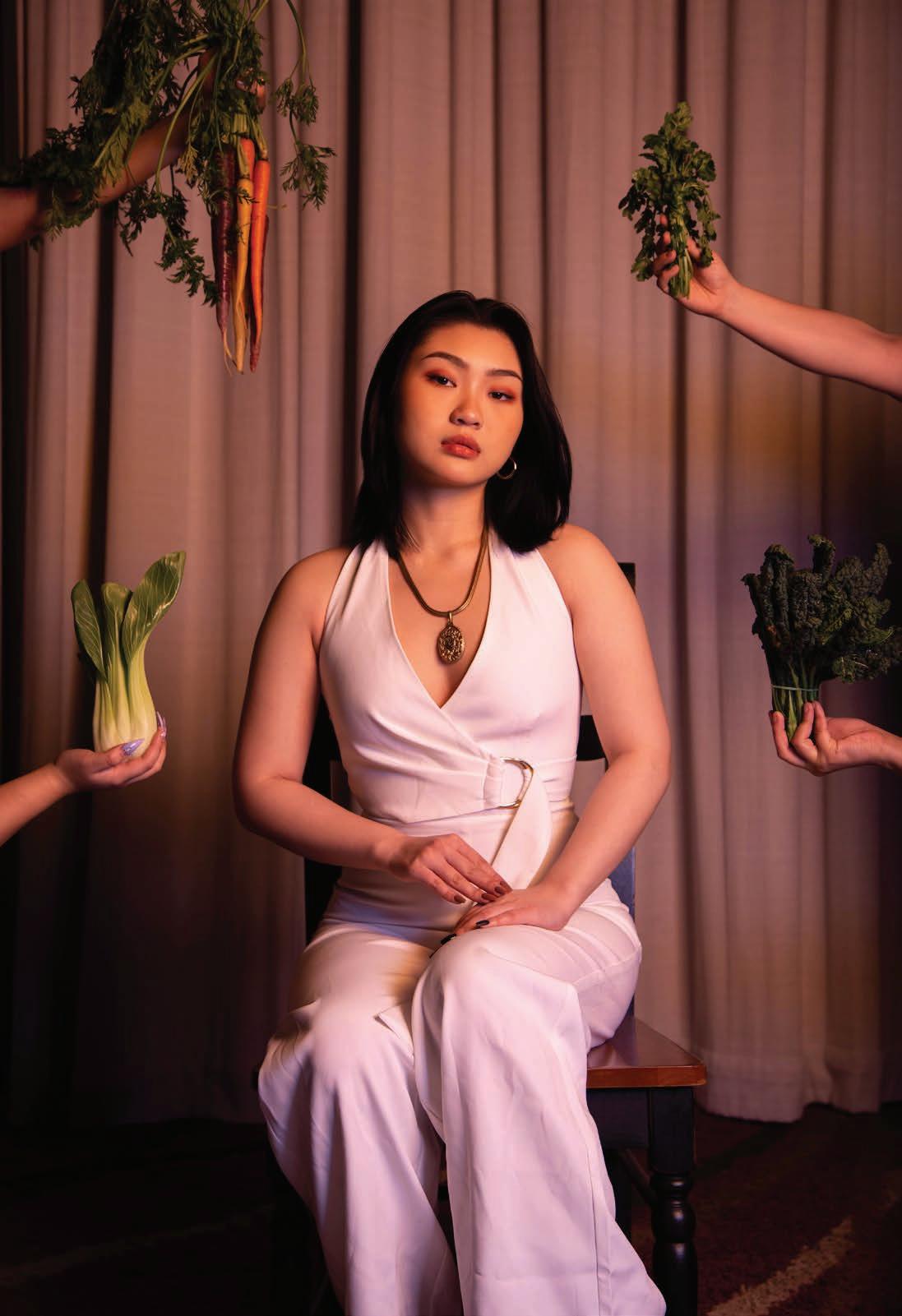
3 minute read
SIMMERING ROOTS
Culture in America is delicately connected by a singular piece of twine. Twine woven from silky strings produced from the elements of divine cultural traditions.
Director and Writer: Jessica Thompson Photographer: Logan Howell
Advertisement
Models: Kaytlyn Nguyen, Jessica Thompson, Snigdha Malladi, Joyce Zhou
Clothing: ASOS
What do Sinigang, Marsala, Egg Flower Soup, and Phốởall have in common? An intermarriage of ethnic food that assists people in experiencing foreign cultures. Food and culture are so intimately connected, as ingredients elucidate a shared identity, breaking bread with the national metaphor we conceptualize as the American melting pot.
How did these dishes reach our community table? Chinese immigrants introduced bok choy to North America in the 19th century. The taro root has origins in Malaysia but is currently cultivated in Hawaii, tropical Africa, and China. And the light green, feathery, coriander has been used as an herb for over 5,000 years. Many of these ingredients are shared across the food of many cultures.
Culture in the U.S is spread so thin we don’t even know where to look for it anymore. We pick it out of the cracks of the yellow pages when we are too lazy to cook for dinner. Race in America, according to the U.S Census Bureau can be categorized into six categories: white, black, Asian, Amerindian/Alaska native, native Hawaiian/Pacific Islander, and mixed ethnicity. That’s it. Some like to say America and its institutions is a cauldron filled with

an abundance of simmering cultures. However, many believe this is a concept used to create a sense of nationalism, the promise that all immigrants can be transformed into Americans. This could lead to cultural assimilation as defined by Milton Gordon in his book “Assimilation in American Life”, describes it as “the gradual process whereby cultural differences tend to disappear.”
In “Against the Melting Pot”, Anjali Abraham said the problem with the melting pot metaphor is, “it prevents the propagation of culture; it limits creativity and openness; it lessens the fullness of what living in this country entails, and it diminishes the need for greater crosscultural understanding.” This could mean that America is not a melting pot but rather a bento box, all on the same plate but not intermixing. This division doesn’t celebrate diversity but rather attempts to under shadow it.
As much as I try to be worldly, the fact of the matter is, I am a Filipino and white and I will never be anything different. As hard as I try I will never truly know what it is like to be Indian, Chinese, Vietnamese, African, Muslim or all the other ethnicities far and in-between.
All I can do is harness my respect and try my best to educate myself on other’s experiences. Too many times have I been called out for not looking ‘Filipino enough,’ whatever that may mean, I reply that ethnicity is not a physical characteristic. To my understanding, ethnicity is about knowing the traditional meals, practices, characteristics, languages and religions.
To truly diversify we need to breakdown these conceptions that a person must be a certain way to feel that sense of belonging. Society needs new visions of assessment that are inclusive of race, ethnicity, class, and gender.
There is power in cooperation, sharing, helping and reconciliation. Studying different lifestyles and cultures can teach us something about the range of human potential.


Joyce Zhou and Snigdha Malladi







